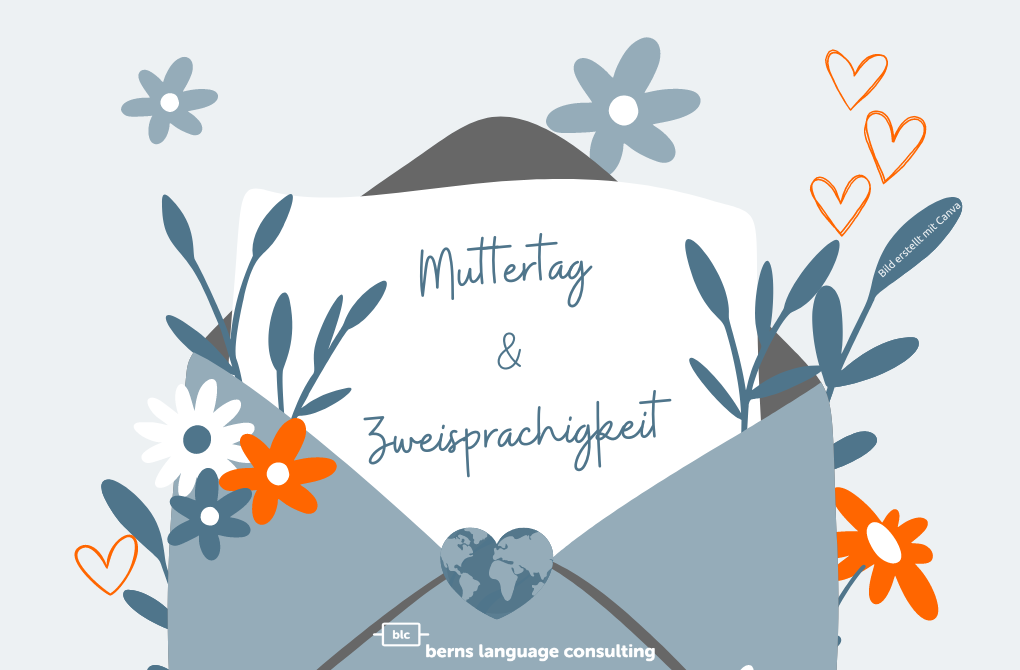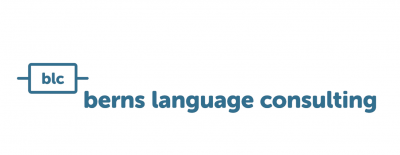
Si no fuera por mi mamá no hablaría español y no sería capaz de escribir este… Oh wrong language, but this mishap was of course planned, because now I have your attention 😉
Unconsciously, my mom has raised me to a person who speaks, thinks, counts, and even dreams in two languages. Not everything at the same time and mostly not mixed, but what should I say? If I do not have the words in one language, the other language fills the gaps.
In this blog, I would like to talk about bilingualism and the advantages and disadvantages and why I am so grateful to my mom on Mother’s Day.
Bilingualism as an opportunity

If you have the opportunity to teach your child two mother tongues, you should make the most of it and lay the foundations early in life for your child to become a global player. Because a foreign language is learned in the blink of an eye from a young age! Here’s a story of Marco and Carmen, Marco’s pregnant wife:
Marco believes he’s full English Pro. Just translate a text into English – no problem. Oh, there comes Carmen. ‘OMG,’ says Marco, ‘shouldn’t we teach little Alex* English? That’s a piece of cake!’
It’s not that easy, dear Marco. Because at some point you will reach your linguistic limits and little Alex will not learn idiomatic expressions. But how does it work?
*Alex is a unisex name in Spanish.
That's how it works
Let’s say Carmen is a Peruvian. Then she could speak Spanish with little Alex and Marco could speak German. Because multilingual education in binational families has some advantages for everyone:
- Little Alex will learn other foreign languages more easily later on.
- His creativity and communicative competence are promoted.
- He can switch back and forth between two different situations more easily.
- Carmen and Marco can communicate their origin and national identity to the child.
- The communication between Carmen/Marco and little Alex is more natural when everyone speaks in their native language.
Basically, multilingual education has no real disadvantages for little Alex. It only becomes difficult if he feels pressured. If Marco stands in front of him with a raised index finger, little Alex gets stressed and will later have difficulties learning. Even if Marco doesn’t understand any Spanish, this is unfavourable – little Alex would take advantage of the situation and play his parents off against each other.

But how?
The most successful method for bilingual language acquisition is the “one person – one language” method. Marco consequently uses German and Carmen Spanish when talking to little Alex. However, Marco and Carmen can communicate with each other in one language without confusing little Alex.
But Marco shouldn’t sit down in front of little Alex with the Duden (German dictionary). The best way to do this is to integrate the two languages naturally into everyday life. Little Alex learns most easily on the go.
In addition, Marco and Carmen could bring in a Spanish-speaking au pair or put little Alex in a binational daycare centre, thus promoting multilingual education through external influences in both languages. If so, Spanish is not just limited to home.
Little Alex is already there and no baby anymore?
No problem: The method does not necessarily have to be followed from baby age. The chances of bilingual education are good up to the age of ten, although it is of course more difficult later than at the age when little Alex begins to speak.
Ambient and non-ambient language
By the way, Spanish in the case of Marco and Carmen is the non-environmental language – in other words, the language that is not the language of the country in which the family lives. It is more difficult to ‘enforce’ this language than the surrounding language, because little Alex has much more to do with German outside his own home than with Spanish.
It may even be that Carmen speaks Spanish very consistently with little Alex at the beginning, but later switches increasingly to German. For example, because they only have German-speaking friends, watch German films in the cinema, do not read Spanish books or just do not go on holiday very often to a Spanish-speaking country.
But beware, Carmen: It is not worth getting inconsistent here! Firstly, little Alex will miss out on important cultural influences from his Hispanic half and secondly, you will quickly feel dejected and disappointed in yourself.
How and when does little Alex actually learn a language?
Little Alex begins to speak at about one to two years old. But of course he cannot do it just that way. Language acquisition is a continuous learning process, which is mainly due to the following processes:
- Imitation and conditioning: The more often little Alex hears something, the faster he remembers it.
- Innate mechanism: Language acquisition is standard acquisition. Little Alex has an innate language-specific ability to deal with the rules of language. According to the motto: He doesn’t know how he knows that either, but that’s the way it is.
- Interaction: If a word is used repeatedly in the same situation and with the same gestures, little Alex will remember it.
- Cognitive processes: Language is linked to the experience of the environment with all the senses. Through them, notions of objects are acquired, further refined, internalized, and finally symbolized by a word. For example, little Alex thinks: ‘That thing is soft. Mum says it’s a stuffed animal. So stuffed animals are soft.’
- Speech-stimulating environment: Where there is not much spoken, there is no language acquisition. Without affection, praise and communication, little Alex will not learn any language. Actually logical!
Mamá, nos vemos en el Hbf!

Today, about 43% of the little Alex’, Marcos and Carmens grow up in multiple languages – globalization makes it possible. Marco and Carmen do not have to worry about language confusion or delays in little Alex’s development. When children grow up with two languages, they learn them without conscious effort. The brain is designed for this.
And even the mixing of languages is no reason to worry – this only happens because just one word is more present in the other language, usually without little Alex consciously noticing it.
One more fun fact for Mother's Day
Did you know that Mother’s Day is not celebrated on the same date in Germany and Spain? In Spain, the ‘Día de la Madre’ always is celebrated on the first Sunday in May, while Germany celebrates a week later. This difference has historical roots. Originally, Spain had no standardised rules for Mother’s Day. Local initiatives and even businesses tried to establish different dates.
It was not until 1965 that the church decided to celebrate Mother’s Day in May as a tribute to the month of the Virgin Mary. Why exactly the first Sunday was chosen remains a mystery. Germany, on the other hand, modelled itself on the USA and celebrates Mother’s Day on the second Sunday in May. This results in a curious calendar difference that reflects the diversity in the international tradition of Mother’s Day.
If you need support on other topics from the world of languages, we are always there for you. Whether it’s machine translation, terminology processes or text quality, we can help you to optimize your language processes and provide advice and support you with our managed services.






